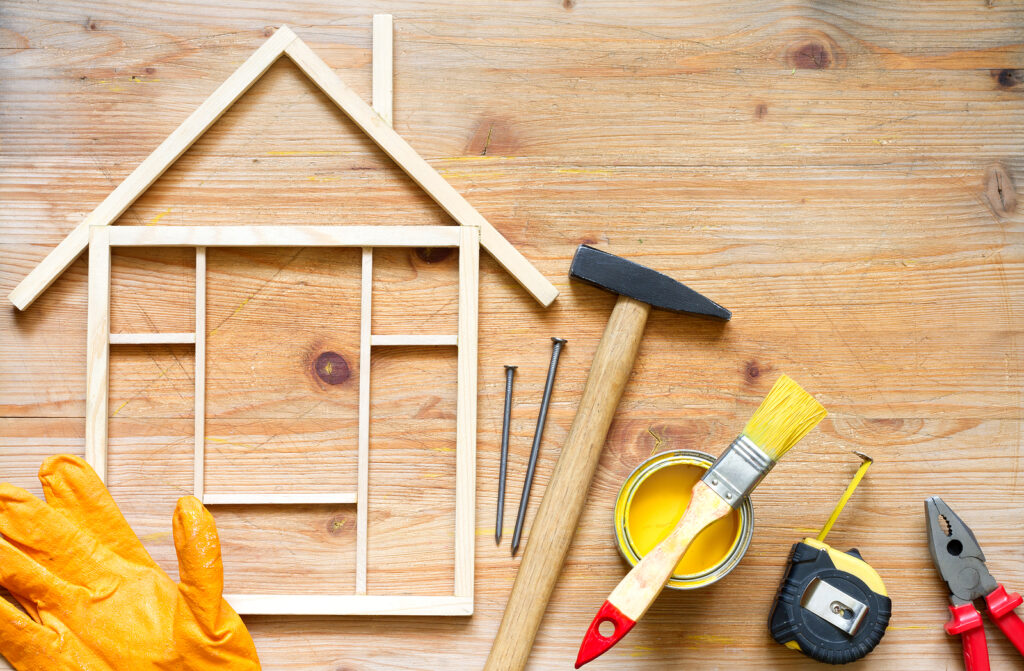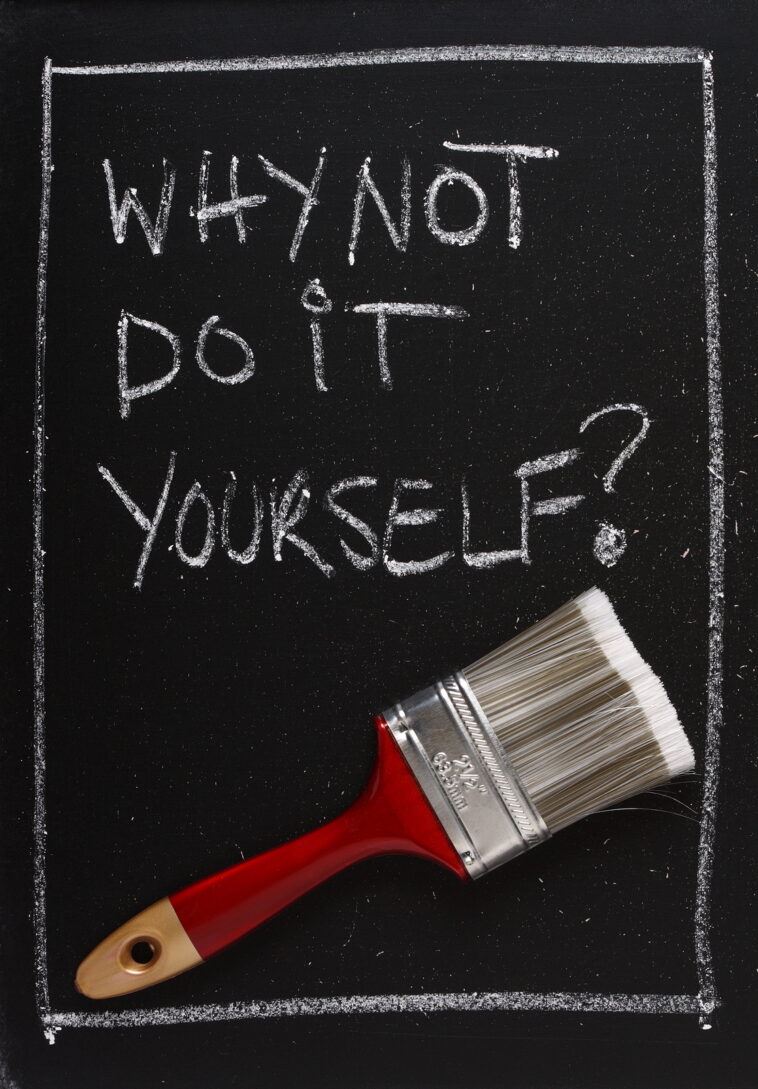Why DIY: The Psychological and Financial Benefits Explored
The Do-It-Yourself (DIY) movement has experienced an unprecedented surge in popularity in recent years. It has evolved from a niche hobby into a mainstream lifestyle choice. People are increasingly drawn to the idea of taking matters into their own hands, whether it's renovating their homes, crafting unique items, tending to their gardens, or even building their furniture.
The appeal of DIY is multifaceted, encompassing not only the tangible results of one's efforts but also the profound psychological and financial benefits that come with it. In this extensive guide, we will delve deep into the world of DIY, exploring why it has become such a prevalent trend and comprehensively examining the myriad advantages it offers.
Why DIY is Good For You
the DIY (Do-It-Yourself) movement is gaining momentum, reflecting a profound shift in how people approach various aspects of their lives. This movement signifies a fundamental change in mindset, where individuals increasingly choose to take charge of their projects and creations instead of delegating them to professionals. The growth of the DIY revolution can be attributed to a multitude of factors, each contributing to the rise of self-sufficiency and the pursuit of personal satisfaction.
Defining DIY
DIY, as an abbreviation for Do-It-Yourself, is deeply rooted in the idea of self-reliance. It encompasses a wide range of activities where individuals embark on tasks and projects independently, harnessing their skills, knowledge, and creativity to accomplish objectives without relying on external experts or services. DIY enthusiasts derive immense joy and fulfillment from the process of creating, repairing, or constructing things on their own. This sense of satisfaction goes beyond the end result and extends to the journey of self-discovery and empowerment that comes with it.
The Factors Behind the DIY Movement
- Resource and Information Accessibility: One of the key drivers of the DIY revolution is the ease of access to resources and information. In today's digital age, a wealth of tutorials, guides, and how-to videos are available at our fingertips. Online communities and forums provide a platform for sharing experiences and knowledge, making it easier than ever for individuals to learn new skills and tackle DIY projects.
- Economic Considerations: Economic factors play a significant role in the appeal of DIY. By taking matters into their own hands, individuals can often save money on labor costs and service fees. This cost-effective approach resonates with many, especially in times of financial uncertainty.
- Personal Fulfillment: The inherent human desire to create, achieve, and express oneself fuels the DIY movement. Engaging in DIY projects allows individuals to channel their creativity, hone their skills, and derive a profound sense of accomplishment from their efforts.
- Environmental Awareness: As environmental concerns become increasingly prevalent, DIYers are also motivated by the opportunity to reduce waste and minimize their ecological footprint. Repurposing, upcycling, and creating homemade products align with sustainability goals and contribute to a more eco-conscious lifestyle.
Also learn our post about What Does DIY Mean in Text
The Psychology of DIY
Embarking on a do-it-yourself (DIY) project is not just about creating something with your own hands; it's a journey that can lead to profound personal growth and well-being. The psychology behind DIY activities reveals a multifaceted world of benefits that go far beyond the finished product.
Fulfillment and Satisfaction
At the heart of the DIY experience lies an overwhelming sense of fulfillment and satisfaction. When individuals undertake DIY projects, they establish clear objectives and then work persistently to achieve them. As they make steady progress and witness their efforts taking shape, a deep sense of accomplishment takes root. This satisfaction transcends the completion of the project itself, boosting self-esteem, enhancing overall well-being, and contributing to a more positive outlook on life.
Self-Efficacy and Empowerment
Engaging in DIY projects fosters self-efficacy, which is the unwavering belief in one's ability to accomplish tasks and overcome challenges. With each project tackled and every new skill acquired, an individual's confidence grows. This heightened self-efficacy extends beyond the realm of DIY and positively influences other aspects of life, from tackling complex work challenges to building more robust personal relationships.
Stress Reduction and Mindfulness
DIY activities often demand intense concentration and attention to detail, effectively transforming them into powerful forms of mindfulness and stress reduction. The act of immersing oneself in a specific task provides a temporary escape from the pressures and anxieties of daily life. Engaging in these meditative processes can become a valuable coping mechanism in today's fast-paced world, promoting mental clarity and emotional well-being.
Sense of Accomplishment and Pride
Every completed DIY project, whether it involves constructing a bookshelf, crafting a piece of art, or cultivating a garden, results in a tangible product or outcome. This tangible evidence of achievement not only reinforces a sense of accomplishment but also instills a lasting sense of pride. Moreover, it serves as an enduring reminder of what can be accomplished through one's dedication and effort, serving as a source of motivation for future endeavors.

Financial Benefits of DIY
The do-it-yourself (DIY) lifestyle goes beyond personal satisfaction; it can also be a savvy financial choice that offers a range of compelling advantages. Here's a deeper look into the financial benefits of embracing DIY:
Cost Savings:
Perhaps the most striking aspect of the DIY approach is the potential for substantial cost savings. When individuals take on tasks and projects independently, they eliminate the labor costs that come with hiring professionals. Whether it's a kitchen renovation, a plumbing repair, or even sewing one's own clothing, the accumulated savings over time can be nothing short of impressive. This newfound financial efficiency not only impacts immediate expenses but also contributes to long-term financial stability.
Value Appreciation:
DIY projects can significantly enhance the value of one's assets, especially in the context of homeownership. Home improvement endeavors, such as remodeling a bathroom or landscaping the yard, not only save on labor costs but also boost the resale value of a property. This dual benefit means that by investing time and effort into DIY renovations, homeowners not only save money but also strategically invest in the long-term appreciation of their homes. It's a win-win situation where financial prudence meets property appreciation.
Budget Control:
Embracing DIY empowers individuals to take charge of their budgets like never before. When you manage a project yourself, you have the freedom to select materials, methods, and timelines that align with your financial goals. This level of control minimizes the risk of overspending and ensures that projects remain within budgetary constraints. DIY enthusiasts can make informed decisions at every turn, ensuring that their financial resources are optimally utilized.
Income Generation:
For some individuals, DIY skills can evolve into a source of income in their own right. By mastering specific crafts or trades, individuals can create and sell handmade products, offer services, or even monetize their expertise through teaching and consulting. This additional income stream can provide not only financial stability but also opportunities for personal and professional growth. It grants individuals the freedom to explore new ventures and diversify their income sources, ultimately contributing to financial security and independence.
Also learn our post about DIY Broken Glass Art
Health and Well-being
The world of do-it-yourself (DIY) activities is not only a realm of creativity and self-sufficiency but also a gateway to improved health and well-being. Here's an in-depth exploration of how DIY can positively impact your physical and mental health:
Physical Activity and Exercise:
Engaging in DIY projects often entails physical activity, which can contribute significantly to improved health and fitness. Whether it's woodworking, gardening, or tackling home repairs, these activities necessitate movement and physical exertion. The regular engagement in DIY can help individuals manage their weight, enhance cardiovascular health, and improve muscle tone. It provides a fun and productive way to stay active, regardless of age or fitness level.
Cognitive Stimulation:
DIY projects require a considerable degree of problem-solving and critical thinking. Whether you're figuring out how to complete a project, troubleshooting unexpected issues, or bringing a creative vision to life, your mind is constantly engaged. This mental exercise is like a workout for your brain and can help individuals maintain mental sharpness and cognitive function, particularly as they age. DIY activities stimulate creativity, encourage innovative problem-solving, and foster a sense of accomplishment as you conquer each project.
Social Interaction:
Surprisingly, DIY can also be a social activity. Many DIY enthusiasts discover that their hobbies provide opportunities for social interaction and community building. Joining DIY groups, attending workshops, or collaborating with friends and family on projects fosters a sense of belonging and social connection. These interactions contribute to overall well-being and can reduce feelings of isolation. Sharing knowledge and skills with others not only enriches your own experience but also strengthens bonds within your community.

Environmental Impact
Embracing the do-it-yourself (DIY) lifestyle not only offers personal fulfillment but also brings significant environmental benefits. Let's delve deeper into how DIY practices positively impact the environment:
Sustainability and Reduced Waste
One of the core principles of the DIY lifestyle is sustainability. DIYers create their own products, often with an emphasis on repurposing items, which effectively reduces the demand for new, resource-intensive goods. By avoiding the need for mass-produced items, DIYers contribute to a reduction in energy consumption and the extraction of raw materials. Moreover, DIYers are more likely to recycle and upcycle materials, further minimizing waste and diverting items from landfills. This conscientious approach to resource use directly translates into a positive environmental impact.
Conscious Consumerism
Engaging in DIY encourages individuals to adopt a more mindful approach to consumption. Rather than constantly buying new items, DIYers often find satisfaction in repairing and reusing existing possessions. This shift toward conscious consumerism not only saves money but also aligns with eco-friendly practices. By valuing and extending the life of their belongings, DIYers reduce the demand for new products and the associated environmental costs of production, transportation, and disposal. This more sustainable approach contributes to the preservation of natural resources and a reduction in carbon emissions.
Reduction of Packaging Waste
Another environmental benefit of DIY is the significant reduction in packaging waste. Commercially manufactured products are often heavily packaged, resulting in substantial amounts of plastic, cardboard, and other materials that end up in landfills. When individuals make their own products or repurpose items, they reduce the need for excessive packaging. This translates into less waste entering the waste stream and a reduction in the environmental impact associated with the production and disposal of packaging materials.
Getting Started with DIY
Starting your journey into the world of do-it-yourself (DIY) is an exciting and fulfilling endeavor. Here's an in-depth guide to help you get started and make the most of your DIY experience:
Finding Your Passion
The first step in your DIY journey involves introspection and discovering your passions and interests. What activities or projects genuinely excite and resonate with you? Whether it's woodworking, gardening, crafting, home improvement, or any other creative pursuit, selecting activities that align with your personal passions will not only make the DIY experience more enjoyable but also keep you motivated and engaged.
Gathering Resources
Once you've identified your DIY focus, it's time to assemble the necessary resources. This includes acquiring the tools, materials, and educational materials relevant to your chosen projects. While there may be an initial investment in equipment, consider it an investment in your skills and creativity. Over time, your collection of tools and materials will grow, making you increasingly self-sufficient and versatile in your DIY pursuits.
Building Skills
DIY is a continuous journey of learning and skill development. It's advisable to begin with simpler projects that match your current skill level and gradually progress to more complex ones as your confidence and expertise grow. Online tutorials, workshops, books, and hands-on experience are invaluable resources for honing your skills and expanding your DIY repertoire. Don't be afraid to push your boundaries and explore new techniques and challenges.
Safety Considerations
Safety should always be a top priority when engaging in DIY activities. To ensure your well-being, educate yourself on proper safety practices relevant to your chosen projects. Invest in necessary safety gear such as gloves, goggles, and ear protection, and be diligent in using them. Familiarize yourself with the potential risks and hazards associated with your chosen DIY activities, and take appropriate precautions. A safe approach not only safeguards your health but also ensures a more enjoyable and worry-free DIY experience.
FAQs: Your DIY Questions Answered
1. What is DIY, and why has it gained popularity?
Answer: DIY, short for Do-It-Yourself, is a concept where individuals undertake tasks and projects independently, relying on their own skills and creativity rather than outsourcing to professionals. It has gained popularity due to several factors, including the desire for self-sufficiency, cost savings, and the satisfaction of creating something with one's own hands.
2. What are the psychological benefits of DIY?
Answer: Engaging in DIY projects can provide a range of psychological benefits, including a deep sense of fulfillment and satisfaction, enhanced self-efficacy, stress reduction through mindfulness, and a profound sense of accomplishment.
3. Can DIY really save me money?
Answer: Absolutely. DIY projects can result in significant cost savings by eliminating labor costs associated with hiring professionals. Whether it's home repairs, renovations, or crafting, doing it yourself can save you money over time.
4. How can DIY projects increase the value of my home?
Answer: DIY home improvement projects can enhance your home's resale value by improving its overall condition and aesthetic appeal. Potential buyers often value homes that have been well-maintained and upgraded, making your property more attractive in the real estate market.
5. Is DIY suitable for everyone, even if I'm not very skilled?
Answer: Yes, DIY is accessible to individuals of all skill levels. It's a journey of continuous learning and skill development. You can start with simple projects and gradually take on more complex ones as you gain confidence and expertise.
6. Are there health benefits associated with DIY?
Answer: Yes, DIY projects often involve physical activity, providing benefits such as improved fitness, enhanced cognitive stimulation through problem-solving, and social interaction when collaborating with others on projects.
7. How can DIY contribute to sustainability and reduce waste?
Answer: DIY aligns with sustainability principles by reducing the demand for new, resource-intensive products. DIYers often recycle and upcycle materials, contributing to a reduction in waste and a more eco-friendly lifestyle.
8. What if I'm interested in DIY but don't know where to start?
Answer: Finding your passion is the first step. Identify what activities or projects excite you the most, and start there. Gathering resources, building skills, and ensuring safety are essential aspects of beginning your DIY journey.
9. Are there any safety considerations when engaging in DIY?
Answer: Safety is paramount in DIY. It's essential to educate yourself on safety practices relevant to your chosen projects and invest in appropriate safety gear. Taking precautions ensures a safe and enjoyable DIY experience.
10. How can DIY contribute to income generation?
Answer: Some individuals turn their DIY skills into a source of income by creating and selling handmade products, offering services, or monetizing their expertise through teaching or consulting. DIY can provide financial stability and open up new opportunities.
Conclusion
In conclusion, the DIY lifestyle offers a vast array of psychological, financial, and health-related benefits. Beyond the tangible results of projects completed, the DIY experience fosters a sense of fulfillment, empowerment, and stress reduction.
The financial advantages, including cost savings, increased property value, budget control, and income generation, further underscore the appeal of DIY. Additionally, DIY contributes to physical fitness, cognitive stimulation, and social interaction, enhancing overall well-being. On an environmental level, DIY promotes sustainability and conscious consumerism.
So, why DIY? The answer is clear: for the countless rewards it brings to those willing to embark on the fulfilling journey of doing it themselves. The DIY lifestyle is not merely a trend but a sustainable and holistic way of living. Start your DIY journey today, and you will discover the numerous benefits that await you, enriching your life in ways you never imagined.
Sources
https://totalpond.com/blogs/water-gardening/benefits-of-crafting-and-diy-projects




